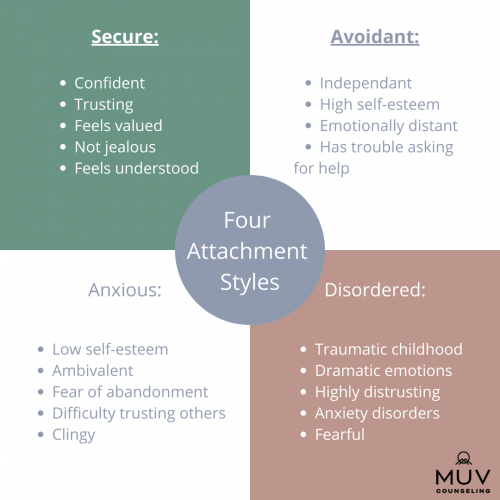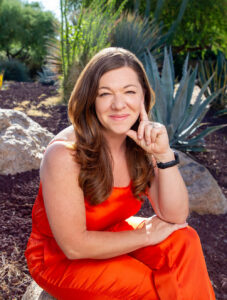
Summer is officially here! The kids are out of school. The days are longer, and the weather is warmer. For many of us, it’s time to take that much-anticipated family vacation. For a lot of families, this means tons of fun, buckets of sunscreen, probably too much junk food, and let’s be honest, a few overly tired kids and some irritated parents. That burnout can easily lead to unnecessary bickering or even worse, feeling worn out and stressed, instead of refreshed and renewed at the end of your vacation.
Have you ever heard anyone say they need a vacation from their vacation? That’s what we’re talking about today. How can we avoid this? Let’s explore how the four different attachment styles play a role in your family’s relationship dynamics. We’ll talk about how to identify areas of change that will help you avoid burnout when it’s time for mom and dad to get back to work and for the kids to head back to school in the fall. We’ll also address the go-to therapy modalities that are best for working through attachment issues.
What is Attachment Theory?
What are the four attachment styles?
- Secure Attachment
- Avoidant Attachment
- Anxious Attachment
- Disordered Attachment

Secure Attachment Style
The secure attachment style is the stand-alone when it comes to a person’s ability to openly express and relate to others. Just as its name suggests, a child with a secure attachment style felt secure, safe, understood, comfortable, and valued by their parents. People with early childhood secure attachment styles tend to navigate adult relationships well. They are usually trusting of partners, less jealous, and more confident.
Avoidant Attachment Style
Also referred to as dismissive attachment, the avoidant attachment style is the first of the insecure attachment styles. Generally developed when parents or caregivers are a bit more distant or even dismissive of big emotions at a young age, these children tend to grow up to be more independent and self-sufficient. Because emotions may have been viewed as unnecessary or dramatic as children, they learn to rely on themselves and may have trouble asking for help. The positive side of this is that those with an avoidant attachment style tend to have high self-esteem and are confident in their own abilities to handle whatever life throws their way.
Anxious Attachment Style
Those with an anxious attachment style, sometimes called ambivalent attachment style, often experienced childhood with caregivers who were just…ok. Sometimes they were great, attentive, and did all of the right things that parents or caregivers do. While other times, they were detached, overwhelmed, or indifferent. This inconsistency proved to be nothing but confusing to a young and developing mind. The anxious attachment style leaves adults with low self-esteem, fear of abandonment, and difficulty trusting others in relationships.
Disordered Attachment Style
If the secure attachment style is the easiest type, then the disordered attachment style is perhaps the most difficult. Sometimes called the disorganized or fearful attachment style, a disordered attachment style is usually developed when a child’s caregivers are physically, verbally, or sexually abusive. Among other forms of trauma, this leaves the adult with an inability to regulate emotions, anxiety disorders, and highly distrusting of others.
How Does my Attachment Style Affect My Parenting?
As you’ve read through these, you’ve probably easily identified your own attachment style with your parents or caregivers but thought, “that’s not how I want to be (or how I am) with my children.” Don’t worry, that’s the beauty of mindfulness and self-discovery. The past is not doomed to repeat itself. Your attachment style with your parents does not have to be the same with your children. The fact that you’re reading this article is proof enough that you are already committed to choosing a life that aligns better with your values and goals. Likewise, as we mentioned earlier, the attachment style you developed as a child can change as you grow into adulthood and form relationships with others.
A Real Life Example –
Take Leanor and her family for example. Leanor and her husband Stephen have been married for 8 years. They have two beautiful sons, Micah and Reese. They’re great kids, happy, and overall well-behaved. But stick them in a van for 8 hours and they’re bound to get cranky. They plan to take their annual family vacation to Lake Tahoe when Micah and Reese get out of school for the summer. Last summer, the boys fought the whole drive home. The van got a flat tire. There was a 2-hour delay near Denver. You name it, it was miserable for everyone. By the time they arrived home, the whole family was so exhausted and upset with one another that they felt like they hadn’t had any time off.
Leanor and Stephen had pretty different childhoods. Leanor’s parents weren’t around a lot and left her and her brother mostly to raise themselves. She had identified herself in the avoidant attachment style early on with her therapist. She determined that she obviously wanted her kids to have a much more secure attachment style. Stephen’s parents, on the other hand, were model parents. He fell into the secure attachment style without question. Thanks to therapy, mindfulness, and Stephen’s healthy relationship with his parents, Leanor’s new attachment style as an adult in relationships had changed to be more along the lines of secure attachment. So, she was determined not to let last summer happen again this year.

Acceptance & Commitment Therapy (ACT)
Leanor made an appointment with her therapist to work through her feelings before their trip this summer. Acceptance and Commitment Therapy (ACT) is modern behavioral psychology that focuses on mindfulness and acceptance processes to help you gain contact with the present moment and ultimately gives you psychological flexibility. Leanor’s therapist walked her through the 6 stages of Acceptance and Comment Therapy (ACT):
- Cognitive Diffusion – We are not our thoughts. When Leanor and her family are stuck in traffic, tired, and grumpy, thinking that this is the worst day ever, her therapist encouraged her to remember, that is only a fleeting thought. It is not reality or truth.
- Acceptance – Accepting means not suffering, being walked on, or giving up. One bad drive home last year, or Leanor’s parents’ failure to be there for her and her brother when she was Micah and Reese’s ages, does not have to mean everything will always be terrible.
- Contact/Connection with Present Moment – The present moment is the only time we can take action or be happy. So, the tire blew? Let’s see how fast we can get that tire changed and back on the road! Team Pit Crew!
- Observing Self – Develop the part of ourselves that is consistent. Leanor knows that she is a good mother, Stephen is a good dad, and Micah and Reese are good kids. The one bad trip is not who they are.
- Values Clarification – Identify what’s important to you and build a guide to live by. Enjoying family is important. Building good memories for Micah and Reese is the goal.
- Committed Action – This is your change maker. This is where you set your goals, guided by values. Leanor and her therapist talked about her goals for the trip this year and developed the tools to address difficult thoughts and feelings which might get in the way of her committed actions.
Through this flexible process of Acceptance and Commitment Therapy (ACT), Leanor and her family were able to take their Lake Tahoe trip this year without the fear of another terrible ending. Sure, there were a few spats. No one is perfect and Micah really wanted Taco Bell when Reese really wanted Del Taco! It happens. The important thing is, that Leanor and Stephen were able to return to work feeling refreshed and the boys will have countless stories of summertime memories to tell when they return to school in the fall.




